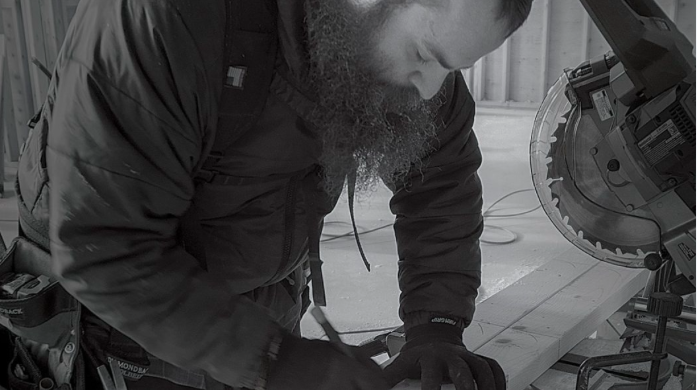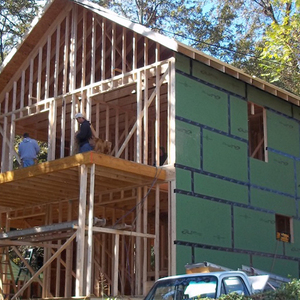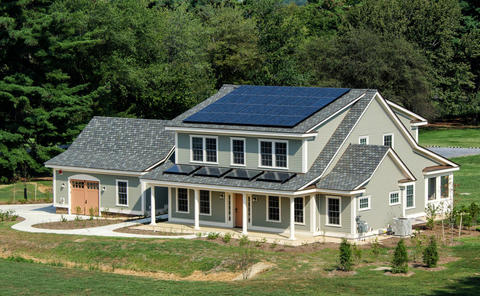
This month, I’m going to make a little zig from my recent metrics theme. I feel compelled to put these floating thoughts into a cohesive-ish form, so bear with me for a bit of navel gazing and reflection . . .
I believe that I occupy a unique position in the building industry for someone my age (38). I have 22 years of experience, a father who is a full-time contractor, and a grandfather who acted as a lightning rod for early dives into high-performance building. I don’t want to seem precocious but I feel I have an endowed sense of the industry that goes beyond my years working in the field. This gives me a perspective that is not so jaded by a lifetime in the trenches but also not naïve enough to fall for novel gimmicks. In other words, I am seasoned but optimistic. I’m laying this out because I think it colors the things I’m about to say.
For better or worse, we are at a tipping point in this business of “green,” “high-performance,” “sustainable”—or whatever you want to call it—building. For decades, the work we do was siloed to sporadic groups of zealots and dreamers. Slowly, its roots spread and interest grew a bit wider than the pioneers who made the lion’s share of big mistakes (earth tubes to come to mind, but I digress.)
Then came the early green building adopters, which include many of us here in GBAland. We managed to avoid totally ticking off those pioneers, and luckily, they stuck around to guide us. We used the groundwork they laid and ran with it. We began backing away from granola idealism and the foam-will-fix-everything ideology. We put in the work and we’ve made progress.
I’m talking about the way we construct and care for buildings, but I’m also talking about the culture of the craft. Flashing details, insulation ratios, cost-benefit analyses, environmental stewardship, homeowner equity—they are all tied together. We’ve seen things that 20 years ago would have been considered fringe adopted as part of our building codes. We’ve started conversations about our responsibilities as professionals in the construction industry.
I’ve watched the kind of work we do explode. Suddenly, Passive Houses are popping up everywhere. Discussions about high-level flashing techniques can be found all over social media. Paradigm-shifting products are flowing into the market place faster than I can keep up with (and I have a pretty high bandwidth for new stuff). We are talking about indoor air quality on mainstream media outlets, which is mind-blowing for a guy who, 15 years ago, felt like Neal Armstrong because I was putting 1-1/2 in. of polyiso on the outside of a house.
This is exciting but also a bit terrifying. Like a stage performance, one hopes to have put in enough practice that, once in front of audience, a missed note will be filled in by bandmates.
I think we’ve paid our dues. Better buildings are no longer marginal territory. The industry’s culture is shifting to become a place I’d be happy to see my son engaged. We are making smarter choices. We are simplifying while becoming more advanced. And we are laying more groundwork for the future of construction.
Hopefully geopolitics won’t cut this experiment short. I’m not sure where we will end up, but we are gaining speed, and wherever the destination, it’s sure to be “Pretty Good.” _________________________________________________________________________
Ben Bogie is a second-generation high-performance-building obsessive working as a project manager for BPC Green Builders of Wilton, CT. Photo by Scott Gibson.
Weekly Newsletter
Get building science and energy efficiency advice, plus special offers, in your inbox.















6 Comments
There is much to be said for doing your own thing. Free enterprise still exists in the building industry, just a few codes to abide by. Do right by your building customers, you will always have work and never pay for advertising.
God I hope you’re right.
Nice piece.
Like you I have been at this a while, and for a while I did talks about green building, and I found that 90% or more of builders have no idea how to achieve a high performance green building. In my State of PA they waived the air tightness requirement when they adopted the 2012 building code as a result of PA NAHB lobbying in part because most builders do not know how to achieve low air infiltration rates and because there are not nearly enough raters to test all the buildings being built. The whole building industry needs to learn about building science and how to achieve better performance.
Sometimes I wish I had idealism like yours. By the time I learned about green/high performance etc I was burned out after 20 years in construction. I am enjoying the consulting side of the industry but real high performance projects are few and far between.
They are rarer than I would like to see, but there is progress, especially in commercial buildings. The adoption of C Pace has helped make building a high performance commercial building more profitable. One developer I am working with is about to move forward with an investment of $56 million in three buildings. Originally designed to code, they will now use C Pace to design and build to LEED Gold because of the benefits of using C Pace financing. They will be able to charge higher rents, the tenants will have lower energy costs and improved air quality and the buildings will be more resilient.
I find there are pockets of the country where green building is leading the way in part because there is a healthy organization promoting and educating about green building.
My daughter and Son in Law built a custom home during the pandemic when material costs were through the roof. I suggested switching from OSB and house wrap to ZIP sheathing. The builder had never worked with it, but when all was said and done it cost less and was easier to work with and eliminated the swelling associated with OSB that they had experienced in the past. The builder swore he would never build with another sheathing. They got a tighter house as a result. Win Win!
“[Deleted]”
Log in or create an account to post a comment.
Sign up Log in